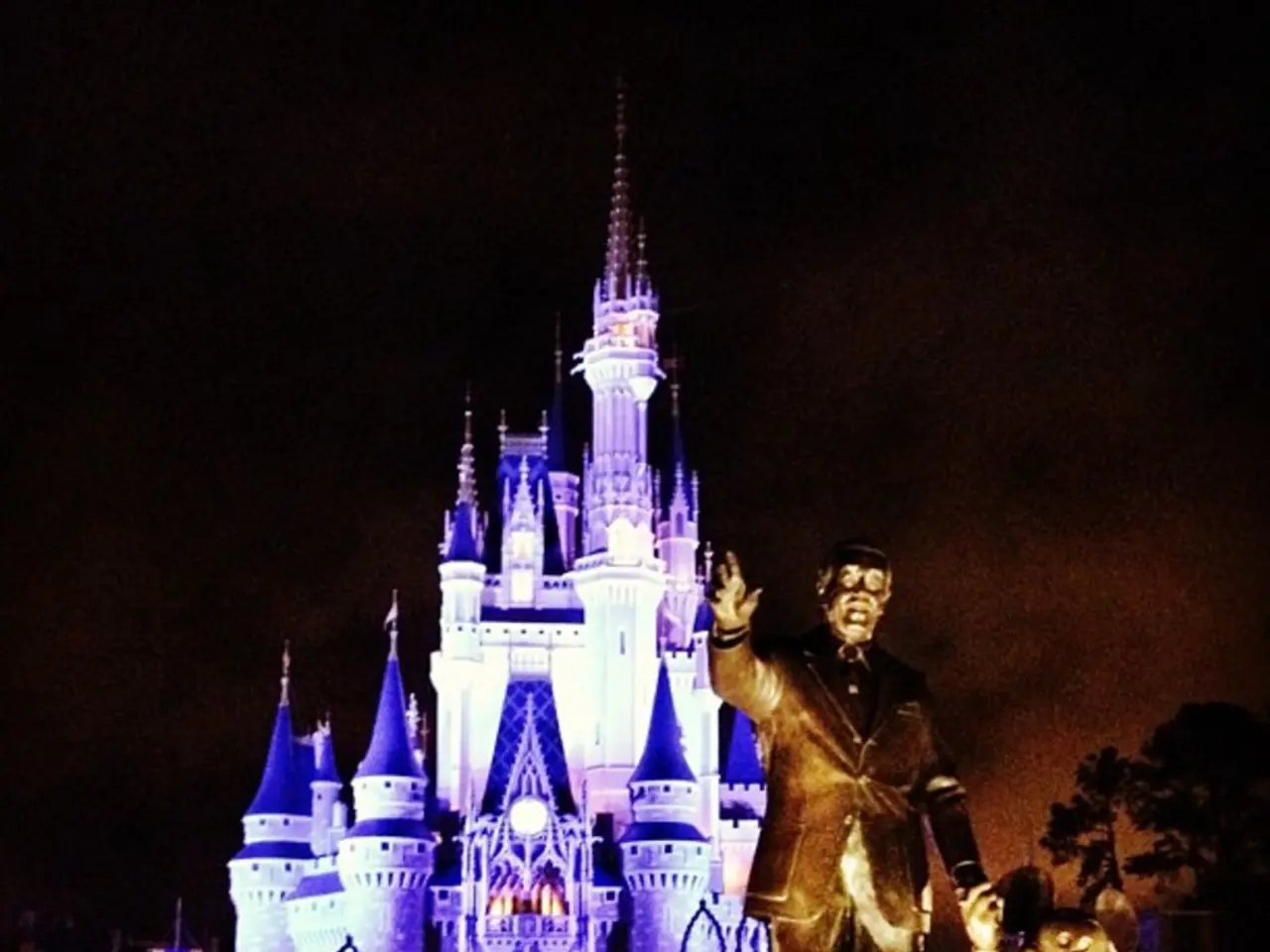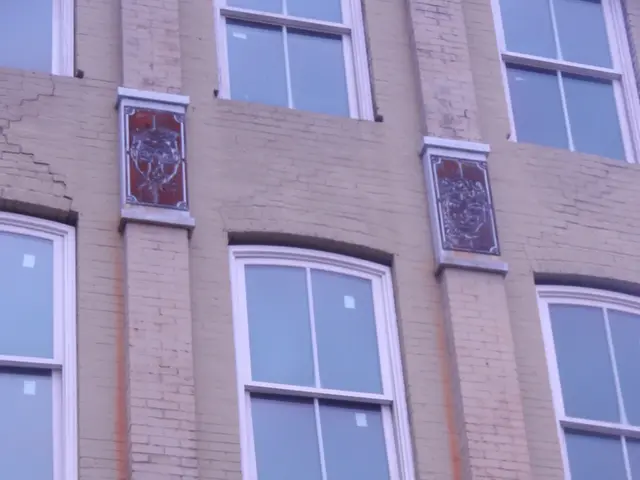Europe's Enchanting Five: Castles that Echo Tales of Old Fairies
In the heart of Europe lie five captivating castles, each a testament to the architectural prowess and historical significance of their respective countries. This article takes a closer look at Neuschwanstein Castle in Germany, Pena Palace in Portugal, Peles Castle in Romania, Pierrefonds Castle in France, and Butron Castle in Spain.
Neuschwanstein Castle, nestled 100 km south of Munich, Germany, is a masterpiece of Neo-Romanesque architecture with Gothic, Byzantine, and Romanesque revival elements. Built between 1868 and 1886 by King Ludwig II as a personal retreat, the castle is a fairy-tale-like structure inspired by medieval legends and operas. Despite the involvement of multiple architects, the castle retains an astonishing unity. Its elaborate decoration and sublime integration with the Alpine landscape make it a must-see attraction.
Pena Palace, located in Sintra, 30 km from Lisbon, Portugal, is a vibrant spectacle of eclectic Romanticism. The palace combines Neo-Gothic, Neo-Renaissance, Moorish, and Manueline styles, creating a colourful and intricate structure built on a hill with commanding views. Originally a summer palace for King Ferdinand II, it was restored and expanded from a ruined medieval chapel and monastery site, symbolising the Portuguese Romanticism era.
Peles Castle, one of the most visited monuments in Romania, was built between 1873 and 1914 as a summer residence for King Carol I. The castle showcases a blend of Neo-Renaissance style with influences from German castles and European romanticism. Its intricate wooden interiors and a mix of medieval fortress and palace features make it a unique blend of old and new. Peles Castle was one of the first European castles to have electricity and modern facilities.
Pierrefonds Castle, located in the village of Pierrefonds, Oise, France, is a 19th-century restoration of a medieval fortress by architect Viollet-le-Duc. Characterised by towers, battlements, and fortified walls, the castle looks authentically medieval, although it functions more as a grand residence. Pierrefonds Castle features drawbridges, machicolations, gargoyles, and intricate interiors, making it a fascinating example of Gothic revival architecture.
Butron Castle, located in Gatika, Spanish Basque Country, is a traditional medieval fortress with Gothic and Basque architectural elements. Its trapezoidal shape, cylindrical towers, defensive features like a moat and battlements, and well-preserved fortress emphasise its military architecture. Although currently closed to visitors, it is still possible to walk around the exterior of the castle. Butron Castle showcases a stacked crenellated tower design and an overloaded neo-Gothic style.
These castles and palaces, though all grand and historically significant, reflect different architectural movements, historical eras, and cultural meanings within Europe. Neuschwanstein Castle, with its fairy-tale aesthetics, inspired Walt Disney for his studio's logo, while Butron Castle preserves medieval Basque military architecture. Pena Palace, a Portuguese cultural emblem, represents a cultural synthesis and the era's fascination with exoticism and revival styles. Peles Castle symbolises Romanian royal modernization, and Pierrefonds Castle exemplifies Gothic revival and restoration philosophy. Each castle offers a unique glimpse into Europe's rich and varied history.
Incorporating elements of Neo-Romanesque architecture, Neuschwanstein Castle,ей located in Germany, showcases a unique lifestyle that blends medieval legends and operas with modern visitors.
Pena Palace, a striking spectacle in Portugal, embodies the pluralistic cross-cultural influences of its Romanticism-era lifestyle.




